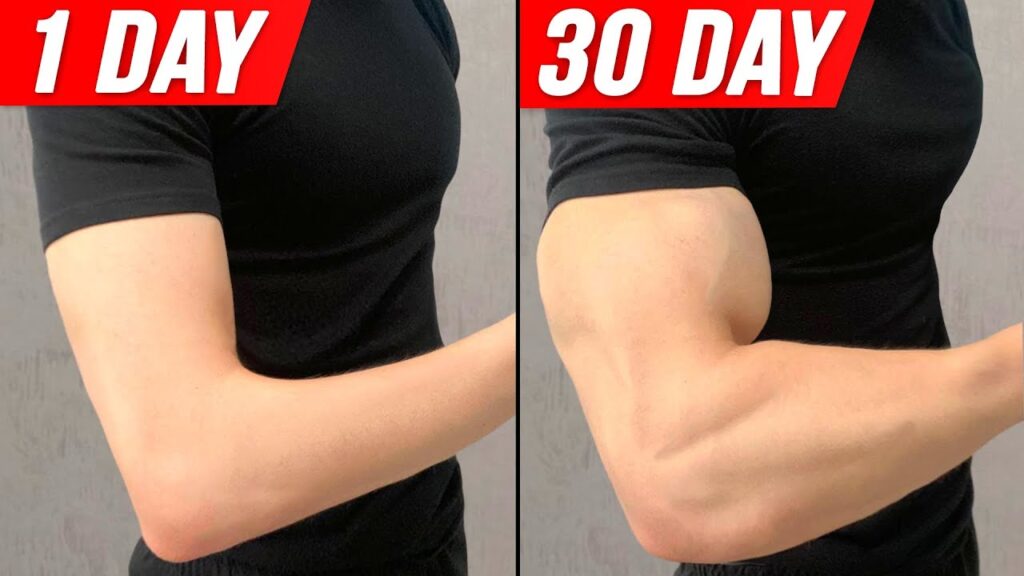In the world of fitness and bodybuilding, the bench press has long been recognized as a cornerstone exercise for developing upper body strength. It’s a compound movement that primarily targets the pectoralis major, or the chest muscles, but also engages a host of other muscles in the upper body. But what about the biceps, those muscles that flex your arm and give your upper body a powerful appearance? Do they get a workout during the bench press?
Fitness enthusiasts and professionals often debate whether the bench press works the biceps or not. Some swear it does, while others argue it barely affects these muscles. So, who’s right?
In this article, we’ll dive into the biomechanics of the bench press to see how it impacts bicep activation. We’ll break down the anatomy of the biceps, look at their role in the bench press, and discuss how different bench press techniques can influence bicep engagement.
Understanding the Bench Press
The bench press is a widely recognized exercise that has gained popularity for its effectiveness in building upper body strength and muscle mass. It’s a compound movement that primarily targets the pectoralis major (chest muscles), anterior deltoids (front shoulder muscles), and triceps brachii (muscles at the back of the upper arm).
While the bench press is known for these primary muscle groups, it also engages secondary muscles such as the serratus anterior (muscles that wrap around the rib cage), which plays a crucial role in stabilizing the shoulder blades during the lift. Additionally, core muscles like the obliques and rectus abdominis are activated to maintain stability throughout the exercise.
SHOP FOR THE ADJUSTABLE WEIGHT BENCH ON AMAZON
The bench press can be performed with either a barbell or dumbbells, and variations of the exercise can target different muscle groups to some extent. For example, a narrower grip bench press will place more emphasis on the triceps and forearms. It’s important to use proper form to maximize benefits and minimize the risk of injury. This includes maintaining a neutral spine, keeping feet flat on the floor, and using a grip width that allows for a full range of motion without compromising form.
Incorporating bench presses into your workout routine can help improve muscular endurance, increase upper body strength, and contribute to overall fitness goals.
Anatomy of the Biceps

The biceps brachii, commonly referred to as the biceps, is a prominent muscle located on the front of the upper arm. It comprises two heads: the long head and the short head, both originating from different parts of the scapula. The long head originates from the supraglenoid tubercle, while the short head arises from the coracoid process.
These two heads merge into a single muscle belly that attaches to the radial tuberosity of the radius bone in the forearm. Functionally, the biceps are primarily responsible for the flexion of the elbow, allowing the forearm to be lifted towards the shoulder. Additionally, they play a crucial role in the supination of the forearm, which involves rotating the palm upward.
SHOP FOR THE ADJUSTABLE DUMBBELL SET ON AMAZON
The biceps also assist in shoulder flexion to a lesser extent. This muscle is not only essential for various daily activities that involve lifting and carrying but also contributes significantly to the aesthetic appearance of the upper arm, making it a focal point in strength training and bodybuilding. Understanding the anatomy and function of the biceps is crucial for developing effective exercise routines and preventing injury during upper-body workouts.
Bench Press Form and Bicep Activation
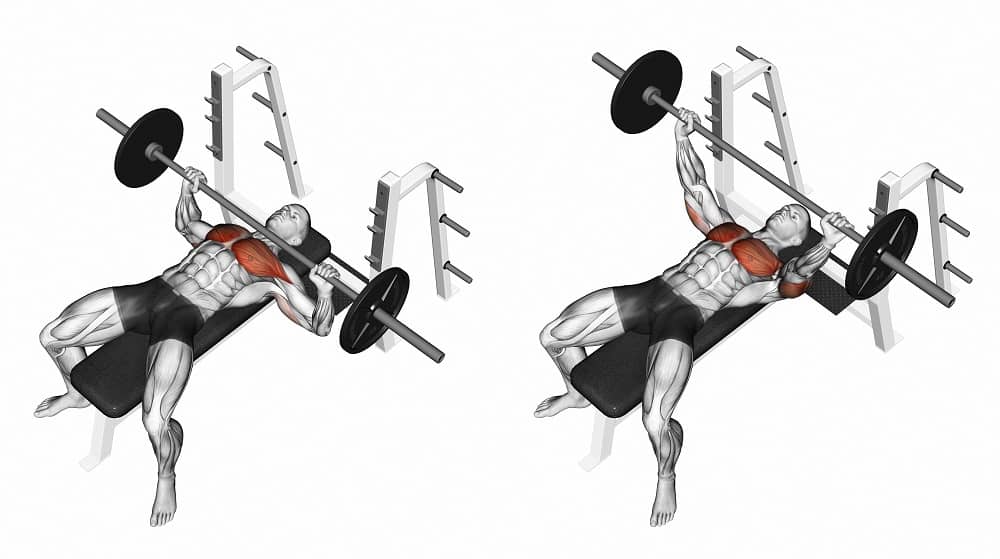
The bench press is a compound exercise that primarily targets the chest, shoulders, and triceps. However, the biceps also play a role as stabilizer muscles. They help control the movement and prevent the arm from twisting during the press. This means that while the biceps are not the main focus of the bench press, they are still activated to some extent.
The degree of bicep activation can be influenced by the form and technique of the bench press. Here are some key points:
- Grip Width: A wider grip will reduce the range of motion and put more emphasis on the chest and shoulders, reducing the activation of the biceps. A narrower grip will increase the range of motion and put more emphasis on the triceps, but it can also slightly increase bicep activation as the biceps work to stabilize the movement.
- Elbow Position: Keeping your elbows closer to your body (tucked in) during the bench press can also increase the activation of the biceps. This is because the biceps are working harder to stabilize the movement when the elbows are tucked in.
- Controlled Movement: Performing the bench press with a slow, controlled movement will increase the time under tension for all muscles involved, including the biceps. This can lead to greater muscle activation overall.
- Full Range of Motion: Using a full range of motion during the bench press will engage more muscle fibers, leading to greater muscle activation. This includes the biceps, which are engaged during the lowering phase of the bench press.
- Pause at the Bottom: Pausing at the bottom of the bench press, when the bar is at chest level, can increase bicep activation. This is because the biceps have to work harder to stabilize the weight and control the movement.
- Controlled Eccentric Phase: Slow down the lowering phase of the bench press. This increases the time under tension for all muscles, including the biceps. The biceps have to work harder to control the weight as you slowly lower it to your chest.
- Incorporate a ‘Pull’ Movement: After your bench press session, incorporate a ‘pull’ exercise like rows or pull-ups. These exercises target the biceps more directly and can help balance the ‘push’ movement of the bench press.
SHOP FOR THE RESISTANCE BAND ON AMAZON
Remember, while the bench press does activate the biceps to some extent, it is not the most effective exercise for targeting the biceps. If your goal is to build bigger and stronger biceps, it would be beneficial to include specific bicep exercises, such as curls, in your workout routine.
Role of Biceps in Bench Press
The role of the biceps in the bench press is primarily supportive rather than dominant. While the bench press primarily targets the pectoral muscles, deltoids, and triceps, the biceps play a crucial role as stabilizers during the movement. As you lower the bar towards your chest and press it back up, your biceps help to control the descent and provide stability to your arms and shoulders.
Lateral Raises and Trapezius Muscles
This stabilizing action is essential for maintaining proper form and ensuring that the primary muscles can effectively drive the weight. However, the activation of the biceps in bench press is relatively minor compared to exercises specifically targeting the biceps, such as bicep curls. Thus, while the biceps are engaged during the bench press, they do not experience significant growth stimulus from this exercise alone and should be supplemented with targeted bicep exercises for balanced arm development.
Common Misconceptions
Here are some common misconceptions about the bench press and bicep activation:
- Bench Press is a Bicep Exercise: One of the most common misconceptions is that the bench press is a great exercise for the biceps. While the biceps are involved in the bench press, they’re not the primary or secondary muscles being worked. The bench press primarily targets the chest, shoulders, and triceps.
- Bench Press Alone Can Build Big Biceps: Another misconception is that you can build big biceps by only doing bench press. While the bench press does engage the biceps as stabilizers, it’s not the most effective exercise for targeting them directly. If your goal is to build bigger and stronger biceps, it would be beneficial to include specific bicep exercises in your workout routine.
- More Weight Equals Bigger Biceps: Some people believe that lifting heavier weights on the bench press will lead to bigger biceps. However, lifting heavier weights primarily increases the work done by the chest and triceps, not the biceps. In fact, lifting too heavy can lead to poor form and potential injury.
- Bench Press Form Doesn’t Affect Bicep Activation: The form and technique of the bench press can indeed affect bicep activation. Factors such as grip width and elbow position can influence how much the biceps are engaged during the exercise.
SHOP FOR THE GRIP STRENGTHENER ON AMAZON
Addressing these misconceptions can help you better understand the role of the bench press in relation to bicep activation and the importance of incorporating specific bicep exercises into workout routines for optimal results.
Bicep Isolation Exercises
Bicep isolation exercises are designed to target the biceps brachii muscle group specifically, without involving other muscle groups. Here are some effective bicep isolation exercises:
Ez-Bar Preacher Curls: Sit on a preacher bench with your forearms resting on the pad. Hold the Ezy-Bar with an underhand grip and curl the weight up towards your shoulders. Lower it back down with control. Perform 3 sets of 8-12 reps.
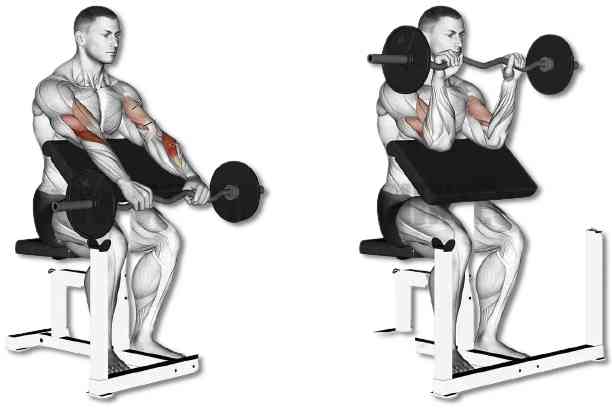
Seated Bicep Curls: Sit on a bench with your feet flat on the floor. Hold dumbbells with palms facing forward and curl them up towards your shoulders. Lower them back down slowly. Aim for 3 sets of 8-12 reps.
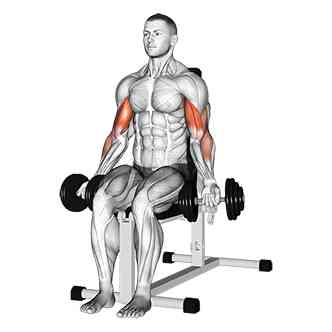
Single Arm Dumbbell Preacher Curls: Similar to seated bicep curls, but one arm at a time. This helps in targeting each bicep individually. Do 3 sets of 8-12 reps per arm.
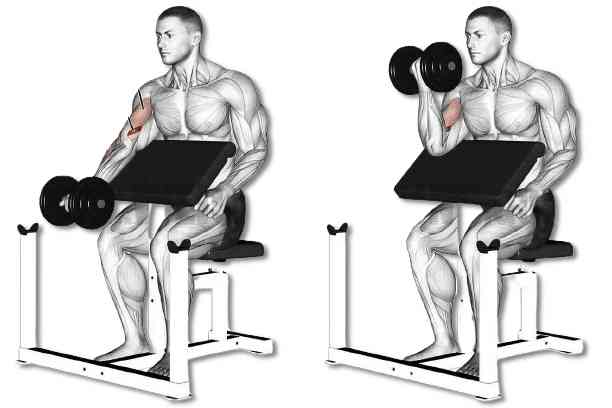
Effectiveness of Reverse Crunches
Dumbbell Concentration Curls: Sit on a bench with your back against it, holding a dumbbell in one hand between your knees. Curl the weight up while keeping your elbow stationary against your inner thigh. Perform 3 sets of 12-15 reps.
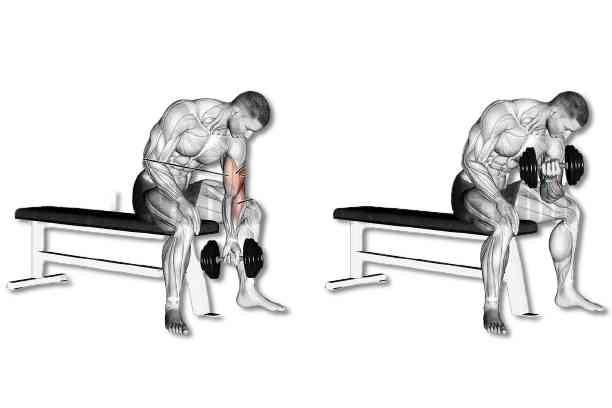
Standing Barbell Bicep Curls: Stand with feet shoulder-width apart, holding a barbell with an underhand grip. Curl the bar up towards your shoulders, keeping your elbows close to your torso. Do 3 sets of 6-8 reps.
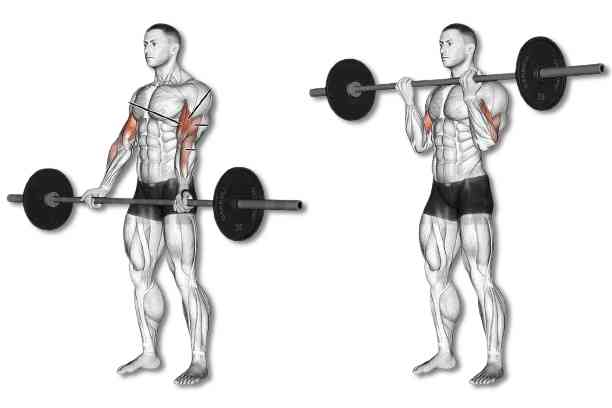
Standing Barbell Drag Curls: Stand with feet shoulder-width apart, holding a barbell with an underhand grip slightly wider than shoulder-width. Drag the bar up the inside of your thighs as you curl it up towards your shoulders. Perform 3 sets of 6-8 reps.
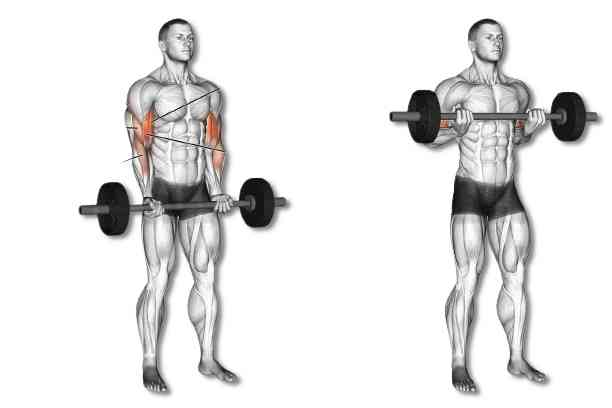
Seated Incline Dumbbell Alternating Curls: Sit on an incline bench with dumbbells in each hand at arm’s length. Curl one dumbbell up while keeping the other arm straight, then alternate arms after each rep. Aim for 3 sets of 8-12 reps.
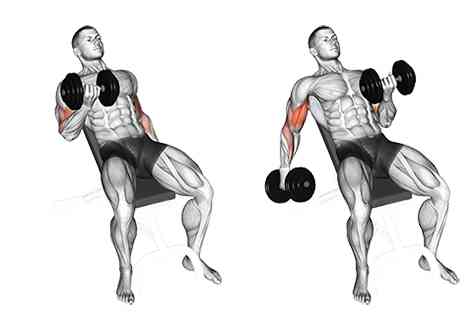
Best Curl Variation for Biceps
Remember to maintain proper form throughout each exercise to maximize effectiveness and minimize the risk of injury. Rest for about 60 seconds between sets to allow your muscles to recover before the next set.
FAQs
Q 1. How can I ensure I’m using the correct form when performing a bench press?
Ans. To ensure the correct form, keep your feet flat on the floor, retract your shoulder blades, and use a grip that’s just wider than shoulder-width. Lower the bar to your mid-chest and push it back up until your arms are straight. Avoid lifting your hips off the bench.
Q 2. What are some common mistakes to avoid when performing a bench press?
Ans. Common mistakes include lifting your hips off the bench, using a grip that’s too wide or too narrow, and not using a full range of motion. Also, avoid using weight that’s too heavy, which can lead to poor form and potential injury.
Q 3. How often should I perform the bench press for optimal muscle growth?
Ans. This can vary depending on your overall fitness goals and workout routine. However, a common recommendation is to incorporate the bench press into your routine 2-3 times per week.
Q 4. What are some signs of overtraining that I should be aware of?
Ans. Signs of overtraining can include persistent muscle or joint soreness, decreased performance, increased injuries, insomnia, loss of appetite, and decreased immunity. If you notice these signs, it may be time to take a break and allow your body to recover.
Q 5. What are some variations of the bench press and how do they differ in muscle activation?
Ans. Variations of the bench press include the incline and decline bench press, and the close-grip bench press. The incline bench press targets the upper chest and shoulders more, the decline targets the lower chest, and the close-grip targets the triceps more. All variations engage the biceps as stabilizers to some extent.
Conclusion
In conclusion, while the bench press is a powerful exercise for developing the chest, shoulders, and triceps, its impact on the biceps is secondary. The biceps act as stabilizers during the bench press, providing balance and control, but they are not the primary muscles being worked.
However, this doesn’t mean that the bench press has no value when it comes to bicep development. Proper form and technique can increase bicep activation during the bench press, and the exercise can be part of a balanced, full-body strength training routine.
But if your goal is to specifically target and grow your biceps, incorporating specific bicep exercises into your workout routine is essential. Remember, understanding the role of each muscle in an exercise and using proper form and technique is crucial for effective workouts and preventing injuries.

Good day, and welcome to Fitthour. My name is Shubham Vijay, and I am a certified personal trainer and nutrition coach with 6 years of experience in the fitness industry. At Fitthour, we specialize in types of training, such as strength training, cardio, or HIIT, and our mission is to help clients achieve their fitness goals and improve their overall health.

